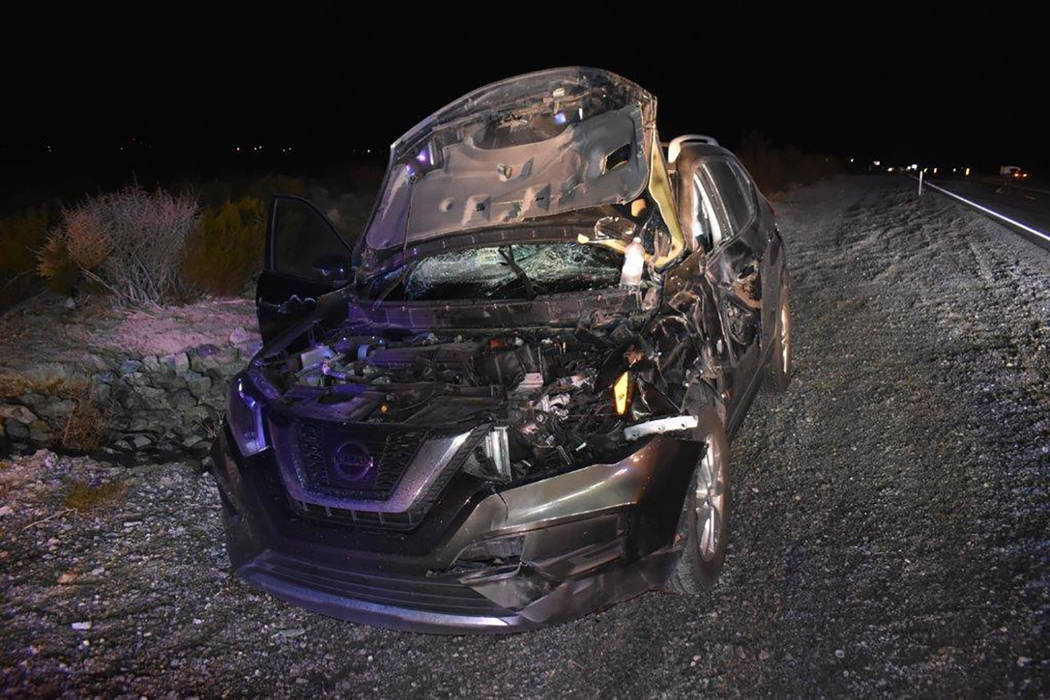Tim Burke: It’s time to get serious about term limits
Wild horses are a symbol of the Old West and part of our western heritage. The picturesque image of wild horses roaming free has been romanticized in books and movies for generations.
People love to see wild horse herds roaming our rural ranges from one end of the state to the other.
Unfortunately, wild horses don’t always stay out on the open range and that can be a problem when they come into areas occupied by humans. When their food supply on the natural ranges dwindles down because of overgrazing and drought conditions, they migrate off the ranges in search of new sources for food and water.
It’s not uncommon to see wild horses roaming through neighborhoods eating shrubs, flowers, grass, and other landscaping, perhaps annoying to the homeowners but not particularly dangerous. It is when they are near roadways that wild horses are not only in danger of being injured but can cause deadly accidents for motorists.
According to the Nevada Department of Transporation, a total of 149 horse-related crashes occurred between 2015 and 2017 — of those, 25 resulted in human injury, and two resulted in human deaths. In addition to the human injuries and fatalities, those crashes have resulted in the deaths of dozens of wild horses.
When a horse-related vehicle accident takes place, our enchantment with wild horses can be viewed on social media in the comments made by posters. The overwhelming majority of comments fall into two categories, 1) concern for the horse’s condition and 2) chastising the drivers involved in the accident. A minority of comments will ask about the fate of the drivers and their vehicle.
A few posters will point out that at night horses can be difficult to see while driving on rural highways and that a horse that runs onto the highway is virtually impossible to avoid. But then they get shouted down by others saying it’s the driver’s fault for not using their high beams or that they were texting. Not sure how the social media commenters are able to discern that information, but it points out how people can be so emotionally involved in the wild horse issue that they are quick to defend the horse and blame the driver without any real knowledge of what happened in the accident.
The U.S. Bureau of Land Management is tasked to manage, protect, and control wild horses and burros under the authority of the 1971 Wild Free-Roaming Horses and Burros Act, This law authorizes the BLM to remove excess wild horses and burros from the range to sustain the health and productivity of the public lands. The BLM also manages the nation’s public lands for multiple uses, in accordance with the 1976 Federal Land Policy and Management Act. The bureau manages wild horses and burros as part of this multiple-use mandate.
As part of that mandate, the BLM conducts an annual population inventory to estimate the number of wild horses and burros roaming BLM-managed lands in the West. The BLM determines what it calls the Appropriate Management Level (AML), which is the number of wild horses and burros that can thrive in balance with other public land resources and uses. Wild horses and burros that exceed AML (which is 26,690) are to be removed from the range, in accordance with the 1971 law.
The current estimated on-range wild horse and burro population (as of March 1, 2019) is 88,090, a 7.5 percent increase over the 2018 estimate of 81,951. That means the current West-wide on-range population exceeds AML by more than 61,400. Nevada accounts for the largest percentage of wild horses and burros with 47,468 of the 88,090 total. Managing the wild horse and burro population is also expensive for taxpayers. For fiscal year 2019, the BLM’s budget for this program is over $85 million.
Unlike the natural species, wild horses have no natural predators to control the herd populations. Instead, our weather cycle of drought years and rainfall years have the greatest impact on herd numbers. The last two winters have been relatively mild and wet and that translates to more grass to eat in the spring and summer. Populations of all species increase under these favorable conditions. Eventually, we will be back in a drought cycle and wild horse herds will experience a decrease of numbers because of starvation.
The most common method used by the BLM to control the wild horse population has been to round up horses and confine them to holding areas. A more humane method was re-implemented by the state in April of 2019. Assembly Minority Leader Jim Wheeler, R-Gardnerville, convinced Nevada Gov. Steve Sisolak,D-Nev., to restore a program to enable volunteer darters to work with the Nevada Department of Agriculture. Darters are volunteers with air rifles that fire darts with birth control into female horses’ haunches.
The program is currently being conducted outside of Reno but with public support and funding, it could be expanded to the entire state.
Managing excess wild horses is an emotional subject that politicians, public figures, and even the press avoid. Some organizations have filed lawsuits or launched campaigns to sway public opinion toward prohibiting management solutions. While the stagnation within the BLM, state governments, and Congress continues, wild horse populations grow exponentially. Until a long-term solution is implemented to reduce the wild horse population, you can expect more horses and humans to be injured in accidents along our roadways.
Tim Burke is a businessman, philanthropist, educator and Pahrump resident. Contact him at timstakenv@gmail.com


















